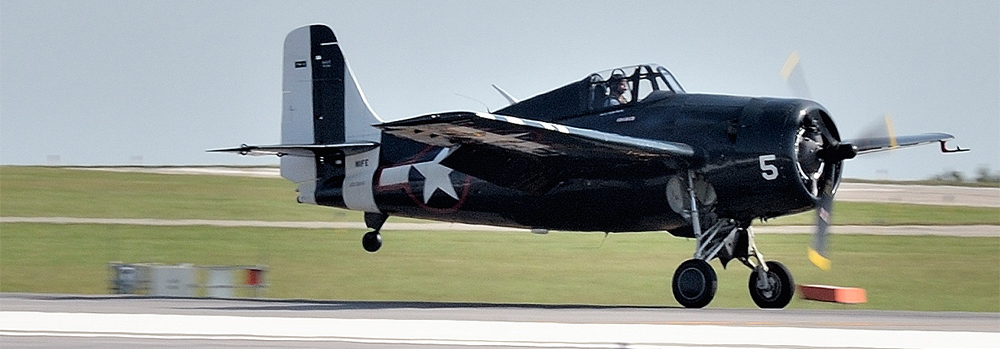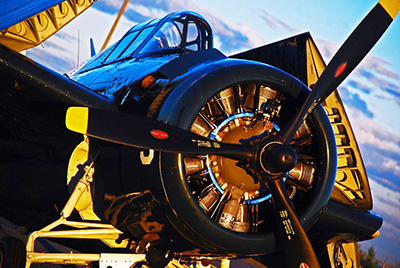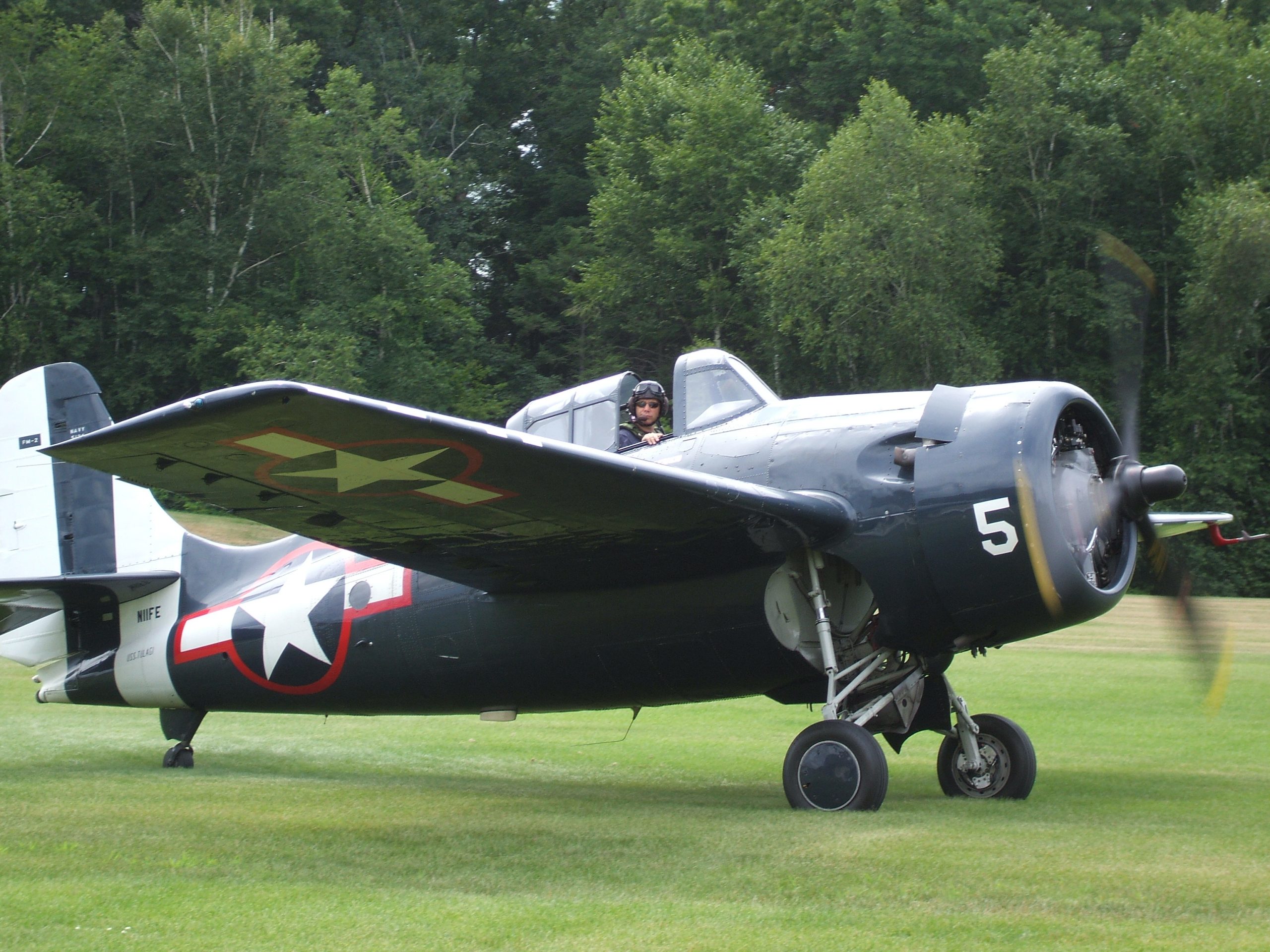1,350 horsepower, bigger vertical tail surfaces and more fuel capacity, earning the name the “Wilder Wildcat.”
As Hellcat production was to begin in mid 1942, continued Wildcat production, deemed to be critical to the war effort, was transferred by Grumman to the Eastern Aircraft Company early in the year. The Eastern plants were in Linden, Trenton and Bloomfield, New Jersey, as well as Baltimore, Maryland. Linden’s advanced Buick, Oldsmobile and Pontiac plants, capable of producing an automobile a minute, were completely converted to produce Wildcats. It was required that aircraft components manufacuted at both plants be interchangable. So parts and assemblies were shared from Grumman lines to Eastern and back during the war assuring continuity when snags arose. There were 7,825 Wildcats built. The breakdown was 1,988 F4F Wildcats produced by Grumman between September 1937 and May 1943, and 5,837 FMs by Eastern between August 1942 and August 1945. By the time Hellcat production was in full swing, the lessons learned at Eastern’s Wildcat production in New Jersey enabled Grumman to build 400 Hellcats a month. The FM-1 Wildcat evolved with Eastern and Grumman collaborating on the new FM-2 design, which was required by the USN for its “Jeep” or Escort Carriers. The FM-2 was unveiled at a ceremony at Linden, New Jersey. The FM-2 was the most numerous and best performing Wildcat with 1,350 horsepower, bigger vertical tail surfaces and more fuel capacity, earning the name the “Wilder Wildcat.”
The FM-2 had four wing guns versus six in the Grumman F4F-4. Eastern knew that removing those two guns allowed the plane to carry more ammunition to the fight. The Grumman Wildcat carried 1,440 rounds for six guns, while the Eastern FM series carried 1,720 rounds for its four guns, allowing more firing time and endurance. The FM-2 covered the Philippine campaign with distinction. Jeep carriers supplied close air support and combat air patrol over all of the invasion beaches, as well as directly against the surface fleet of the Imperial Japanese Navy during the Battle of Samar. The top scoring FM-2 squadron, VC-27, was credited with shooting down 62.5 Japanese aircraft in 4 months during the Philippine campaign, demonstrating the lethality of the FM-2.
The FM-2, having been built in huge numbers, was expected to guard sectors of the Japanese coast and cover the amphibious landings. The bombings of Hiroshima and Nagasaki changed everything, and the portly but deadly dogfighting Wildcat was now without a fight. Larger multi-role aircraft like the Corsair, Hellcat and Skyraider were becoming available. Well beyond the initial F4F’s vision when she was designed in 1936, the sturdy Hellcat and Corsair were capable of not only being fighters, but with their large engines, capable of being Fighter Bombers. The smaller Hellcat seemed to be of little use to the postwar nation, and hundreds of Lend Lease Wildcats were simply dumped into the sea at the war’s end…discarded examples of a bygone type, the pure fighter.
This is perhaps one of the most interesting Wildcat survivors (Bu #86680). It has a rich Navy and civilian history that has spanned over seventy years. While not a combat veteran like her sisters, this Wildcat has survived to tell the story of the GM Eastern plants in New Jersey, the Escort Carriers, Island Hopping in the Pacific balanced with long summer days in the Midwest and on the coast, flying rides, airshows and introducing several generations to flight.
*The Wildcat is currently on display inside the American Heritage Museum next to our Pacific Theater exhibit.













